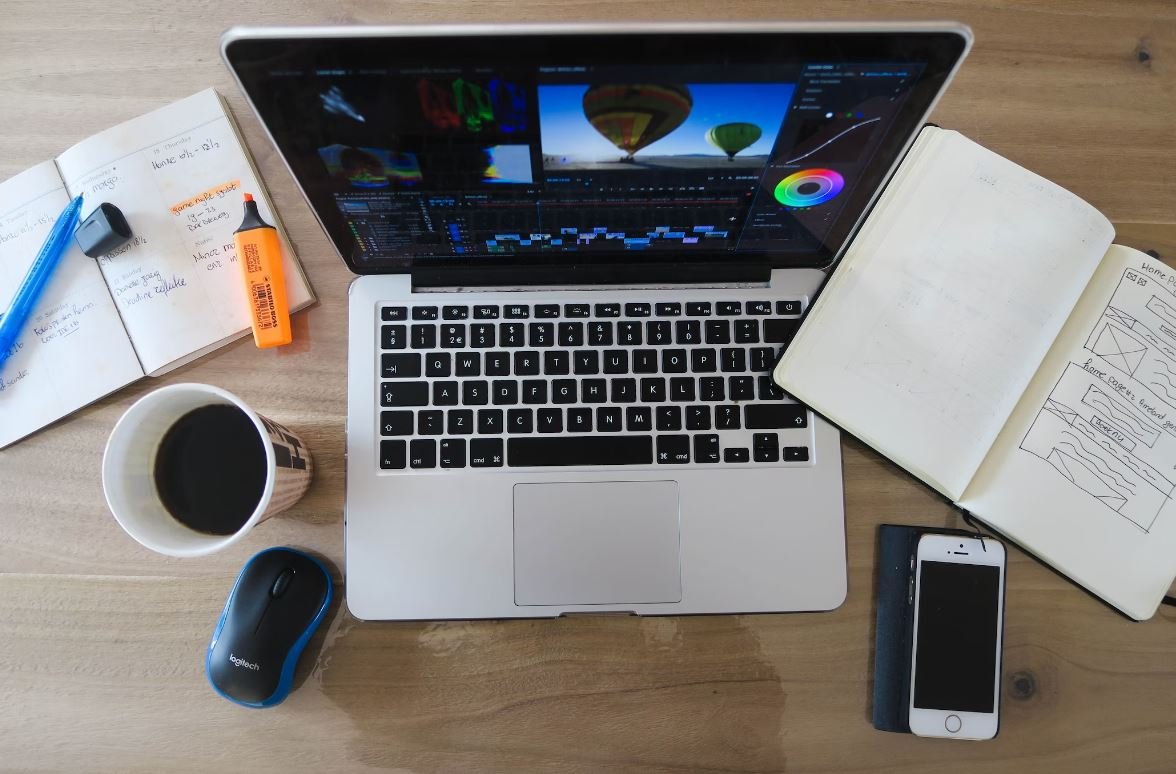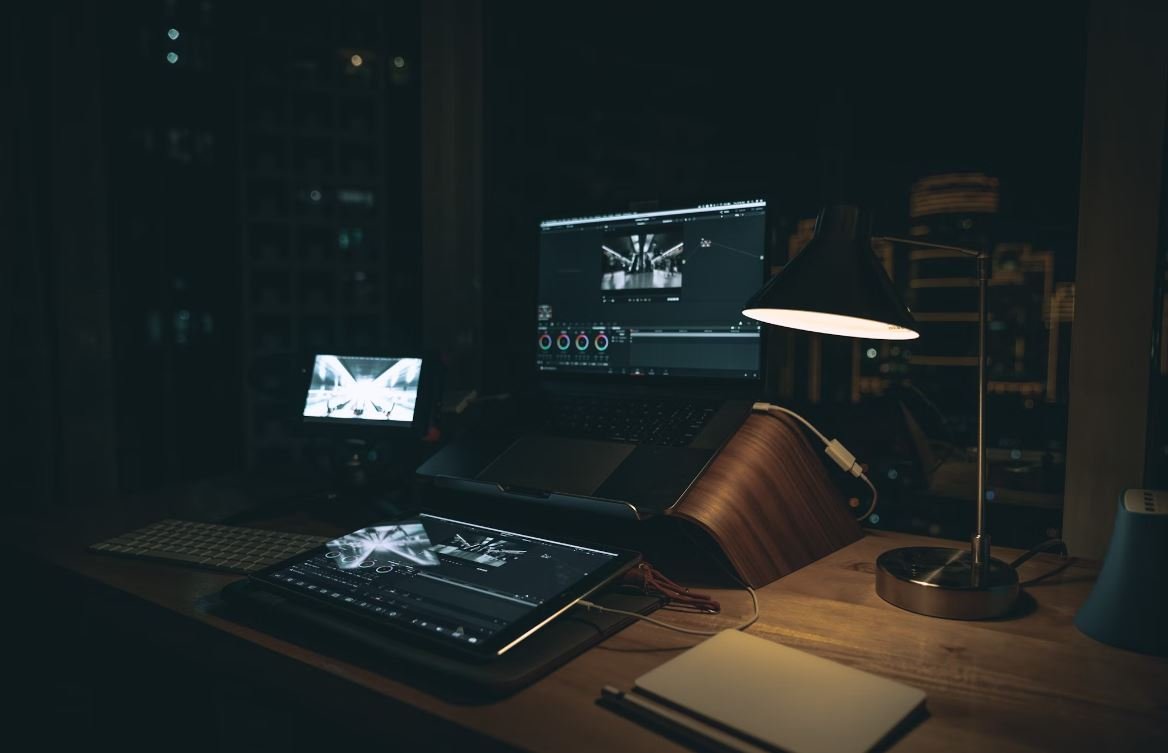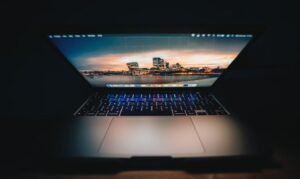Generative Art for Beginners
Welcome to the world of generative art! If you’re interested in exploring the intersection of art and programming, generative art is a fascinating field to dive into. By using algorithms and rules to create artwork, you can produce unique and dynamic pieces that captivate the eye. In this article, we’ll guide beginners through the basics and provide useful tips to help you get started on your journey in generative art.
Key Takeaways:
- Generative art combines art and programming to create unique and dynamic artworks.
- Algorithms and rules are used to generate the artwork, leading to endless possibilities.
- Generative art can be created using various programming languages and tools.
- Experimentation and iteration are crucial in the process of creating generative art.
- Generative art can be exhibited in galleries or shared online for others to enjoy.
Getting Started
To begin creating generative art, you’ll need a basic understanding of programming concepts and some knowledge of a programming language. Python, JavaScript, and Processing are popular choices for creating generative art, as they offer a good balance between ease of use and flexibility. *Generative art allows artists to express their creativity through code and produce visual experiences that would be impossible to create manually.* Once you’ve chosen a programming language, familiarize yourself with its syntax and begin experimenting with simple graphics and patterns.
Exploring Algorithms
Algorithms are at the core of generative art. They are sets of rules or procedures that determine how the artwork is generated. *With generative art, artists have the opportunity to play the role of both programmer and designer, controlling the rules and constraints that guide the art creation process.* Experiment with different algorithms, such as fractals, cellular automata, and randomization techniques, to create diverse and interesting visual outputs. By tweaking parameters and modifying algorithms, you can achieve a wide range of artistic styles and outcomes.
Tools and Frameworks
While you can create generative art from scratch using a programming language, there are also several tools and frameworks available that can simplify the process and provide additional functionalities. Some popular tools for generative art include:
- Processing: An open-source software platform designed for visual arts programming.
- p5.js: A JavaScript library that makes it easy to create interactive graphics and animations.
- Python libraries: such as Pygame, Turtle, and Processing.py, which provide graphics capabilities.
*These tools can save time and provide a more intuitive interface for creating generative art, making them ideal for beginners.* Choose a tool or framework that aligns with your programming language preference and explore its documentation and examples to get started quickly.
Sharing and Exhibiting Generative Art
Generative art offers endless possibilities for sharing and exhibiting your creations. Whether you want to showcase your work online on platforms like Instagram or Behance or exhibit your artwork in galleries, there are many avenues to explore. *The digital nature of generative art allows for easy sharing across the globe, connecting artists and enthusiasts from different corners of the world.* Additionally, you can print your generative art on various mediums, such as canvas or paper, to create physical pieces that can be displayed or sold.
Table 1: Popular Programming Languages for Generative Art
| Language | Description |
|---|---|
| Python | A versatile and beginner-friendly language often used for generative art due to its ease of use and extensive libraries. |
| JavaScript | A popular web programming language that can be used to create interactive generative art experiences. |
| Processing | A programming language and development environment specifically designed for visual arts and generative art. |
Table 2: Examples of Algorithms in Generative Art
| Algorithm | Description |
|---|---|
| Fractals | Mathematical patterns that exhibit self-similarity and can be iteratively generated. |
| Cellular Automata | A system of cells that evolve based on neighboring cell states, creating complex patterns. |
| Randomization | Utilizing random processes to introduce unpredictability and variability into the artwork. |
Table 3: Tools and Frameworks for Generative Art
| Tool/Framework | Description |
|---|---|
| Processing | An open-source software platform designed for visual arts programming. |
| p5.js | A JavaScript library that simplifies the creation of interactive graphics and animations. |
| Python Libraries (Pygame, Turtle, Processing.py) | Additional libraries for Python that provide graphics capabilities for generative art. |
Experimentation and Iteration
When creating generative art, experimentation and iteration are key. *Embrace the concept of trial and error, tweaking parameters and algorithms to discover new and exciting visual outcomes.* Don’t be afraid to deviate from your initial plan and explore new directions. Generative art allows for continuous exploration, enabling you to refine your artistic vision and find unique expressions of your creativity.
Embrace the Endless Possibilities of Generative Art
Generative art brings together the worlds of art and programming, offering artists a unique avenue for self-expression. *With generative art, the boundaries between art and computer code blur, opening up a realm of infinite creativity.* Whether you’re a seasoned programmer or a beginner, exploring the world of generative art can be an exciting and enriching journey. So, grab your programming language of choice, dive in, and unlock the infinite possibilities of generative art.

Common Misconceptions
Misconception: Generative art is only for professional artists
People often mistakenly believe that generative art can only be created by experienced professional artists. However, this is far from the truth. Generative art is accessible to beginners as well, and it provides a great opportunity for individuals to explore their creativity.
- Generative art tools are designed with user-friendly interfaces to cater to beginners
- Various online platforms offer tutorials and resources specifically tailored for beginners
- Generative art is more about the process and experimentation rather than the end result, making it suitable for beginners to practice and learn
Misconception: Generative art requires advanced coding skills
Another common misconception is that generative art is only possible for those with advanced coding skills. While coding can be used to create generative art, it is not a requirement. There are numerous tools and software available that allow beginners to create generative art without any coding knowledge.
- Many generative art tools offer visual programming interfaces, eliminating the need for coding
- Online platforms provide drag-and-drop functionalities, making it easy for beginners to create generative art
- Graphical user interfaces (GUIs) are specifically designed to simplify the process, even for those with no coding experience
Misconception: Generative art lacks uniqueness and creativity
Some people wrongly assume that generative art is repetitive and lacks uniqueness because of its algorithmic nature. However, generative art can be highly individualistic and creative, allowing artists to explore new possibilities and generate one-of-a-kind artworks.
- Generative art tools offer a wide array of customizable options, allowing artists to create unique designs
- Artists can experiment with different algorithms and parameters, leading to diverse and creative outcomes
- Generative art encourages the exploration of unconventional approaches, resulting in innovative and surprising results
Misconception: Generative art is time-consuming
One misconception surrounding generative art is that it requires a significant amount of time to create. While creating intricate generative art pieces can be time-consuming, there are also simpler techniques and tools available that allow artists to create great artworks quickly.
- Generative art can be created in a matter of minutes through fast iteration and experimentation
- There are pre-built templates and presets available that artists can use for quick generation
- Generative art tools often provide ready-to-use components, reducing the time required for creation
Misconception: Generative art is only digital
Contrary to popular belief, generative art is not limited to digital platforms. While digital tools are commonly used, generative art can also manifest in physical forms, such as sculptures and paintings. It offers a unique blend of traditional artistic practices with algorithmic creativity.
- Generative art can be realized through physical mediums, such as paint, clay, or even 3D printing
- Artists can use digital tools to create generative designs that can then be materialized using traditional art techniques
- Generative art can be displayed in physical galleries or exhibitions alongside traditional artworks

Generative Art for Beginners
Generative art is a form of art that is created using algorithms or systems. It involves using programming or mathematical functions to generate art that is unique and ever-evolving. This article explores various aspects of generative art and offers beginners a glimpse into the fascinating world of creative coding.
1. Evolution of Generative Art
From simple computer-generated patterns to complex algorithmic creations, generative art has come a long way. This table illustrates the evolution of this art form over the years:
| Decade | Key Artists | Notable Works |
|---|---|---|
| 1960s | Harold Cohen | AARON |
| 1970s | Frieder Nake | Homage to Paul Klee |
| 1980s | William Latham | Mutation Series |
| 1990s | Karl Sims | Evolved Virtual Creatures |
| 2000s | Marius Watz | Generative Design Visualizations |
2. Tools for Generative Art
Creating generative art requires specialized tools that enable artists to express their creativity through code. Here are some popular tools used by generative artists:
| Tool | Key Features |
|---|---|
| p5.js | JavaScript library for creative coding |
| Processing | Flexible software sketchbook |
| OpenFrameworks | Framework for creative coding in C++ |
| MAX/MSP | Visual programming language for music and multimedia |
| Cinder | Library for professional-quality creative coding |
3. Famous Generative Artists
Generative art has gained recognition due to the talented artists who have embraced this unique medium. Here are some renowned generative artists:
| Artist | Style | Notable Works |
|---|---|---|
| Vera Molnar | Geometric Abstraction | Multiplication of Abstract Forms |
| Casey Reas | Abstract Compositions | Process Series |
| Mario Klingemann | Neural Network Art | Memories of Passersby I |
| Manfred Mohr | Algorithmic Art | P-1547-S1 |
| Sofia Crespo | Bio-inspired Art | Hybrid Synthetica |
4. Applications of Generative Art
Generative art has found its way into various fields and industries. This table highlights some notable applications of generative art:
| Field/Industry | Application |
|---|---|
| Architecture | Parametric Designs |
| Fashion | Algorithmically Generated Prints |
| Music | Algorithmic Composition |
| Marketing | Dynamic Visual Branding |
| Education | Interactive Art Installations |
5. Generative Art Techniques
Generative artists employ various techniques to generate visually stunning and thought-provoking pieces. This table highlights some popular techniques used in generative art:
| Technique | Description |
|---|---|
| Fractals | Infinitely self-replicating geometric patterns |
| Cellular Automata | Grid-based systems of cells evolving through rules |
| Randomization | Probability-based algorithms for randomness |
| Genetic Algorithms | Evolutionary processes to generate art |
| Simulation | Modeling complex systems for art generation |
6. Inspiring Generative Artworks
Generative art encompasses a wide range of fascinating artworks. This table showcases some inspiring generative artworks and their creators:
| Artwork | Artist | Year |
|---|---|---|
| Emergence | Ryoji Ikeda | 2014 |
| Untitled | John Whitney | 1963 |
| Chrono Crossing | Scott Draves | 2012 |
| The Physical Mind | Edwin van der Heide | 2008 |
| Structural Oscillations | Taad Rigs | 2021 |
7. Generative Art and Artificial Intelligence
Advancements in artificial intelligence (AI) have opened up new horizons for generative art. This table explores the relationship between generative art and AI:
| AI Technique | Application in Generative Art |
|---|---|
| Neural Style Transfer | Applying artistic styles to images using neural networks |
| Generative Adversarial Networks (GANs) | Generating new art by pitting two neural networks against each other |
| Recurrent Neural Networks (RNNs) | Generating sequential art, such as music or animations |
| Latent Space Exploration | Discovering new art by navigating through a learned representation |
| Artificial Creativity | AI systems autonomously creating original art |
8. Interactive Generative Art Experiences
Interactive generative art experiences allow viewers to actively engage with the artwork, becoming creators themselves. Here are some notable examples:
| Artwork | Interactive Concept |
|---|---|
| Universe | Users manipulate parameters to generate cosmic visuals |
| Drawn | Viewers collaboratively contribute to an ever-evolving painting |
| Wind | Wind movements trigger generative patterns in real time |
| Audio Canvas | Music input directly influences generative visualizations |
| Motion Synchrony | User movements generate generative visual effects |
9. Impact of Generative Art in Society
Generative art has had a profound impact on society, transcending traditional artistic boundaries. Here are some ways it has influenced various aspects of our lives:
| Aspect | Impact |
|---|---|
| Design | Inspiring novel and innovative design solutions |
| Technology | Pioneering new tools and techniques in programming |
| Education | Stimulating creative thinking and interdisciplinary learning |
| Medicine | Using generative art for therapy and relaxation |
| Science | Visualizing complex scientific data in a captivating manner |
10. Next Steps in Generative Art
Generative art continues to evolve, pushing boundaries and inspiring new possibilities. Here are some exciting areas to explore moving forward:
| Area | Potential Developments |
|---|---|
| AI-Driven Art | Further integration of AI algorithms into the generative art process |
| Virtual Reality | Creating immersive generative art experiences in virtual environments |
| Data Visualization | Exploring generative techniques for communicating complex data visually |
| Social Collaboration | Developing platforms for collaborative generative art creation |
| Generative Design | Applying generative principles to architectural and industrial design |
In conclusion, generative art offers a fascinating convergence of art, programming, and mathematics. By leveraging algorithmic systems, artists can create unique and ever-changing pieces that captivate and inspire. As the field continues to evolve, the possibilities for innovation and creativity are endless. Whether you’re a seasoned artist or a curious beginner, exploring the world of generative art can lead to awe-inspiring discoveries and unexpected artistic journeys.
Generative Art for Beginners – Frequently Asked Questions
What is generative art?
Generative art refers to artworks that are created using algorithms or systems to produce visual outputs. It involves using code, mathematics, or other predefined rules to generate art that is unique and dynamic.
What are the benefits of creating generative art?
Creating generative art allows for exploration and experimentation with code and algorithms, fostering creativity and problem-solving skills. It also provides opportunities for self-expression, as generative art can result in visually stunning and original pieces.
Do I need programming skills to create generative art?
While programming skills can be beneficial, they are not always necessary. There are beginner-friendly tools and software available that provide graphical interfaces to create generative art. However, having knowledge of programming concepts can offer more flexibility and control over the artwork.
What are some programming languages commonly used in generative art?
Popular programming languages used in generative art include Processing, JavaScript, Python, and openFrameworks. These languages offer libraries and frameworks specifically designed for creating visual and interactive art.
How can I get started with generative art?
To get started with generative art, you can begin by researching and learning about different programming languages, tools, and frameworks suitable for creating generative art. Experiment with simple algorithms and code snippets to generate basic patterns and shapes. Practice, explore various techniques, and seek inspiration from other generative artists.
Are there any online resources or communities for generative art beginners?
Yes, there are several online resources and communities dedicated to generative art beginners. Websites like generativeartistry.com and openprocessing.org provide tutorials, examples, and forums where beginners can learn, share their work, and seek advice from experienced artists.
Can I use generative art commercially?
Yes, generative art can be used commercially. However, it is important to understand and respect copyright laws and licenses associated with any external resources used in the artwork. It is recommended to consult a legal professional or seek appropriate licenses if you plan to use generative art commercially.
Are there any limitations to creating generative art?
Like any art form, generative art has its limitations. These limitations can include the capacity to represent complex narratives or emotions compared to traditional visual art forms. Additionally, technical constraints and the reliance on algorithms or data inputs may restrict complete artistic freedom.
What are some examples of famous generative art?
Some famous examples of generative art include the works of artists like Sonia Landy Sheridan, Harold Cohen, and Casey Reas. Sonia Landy Sheridan‘s generative artwork explores the interaction between technology and human creativity. Harold Cohen’s AARON program generates unique drawings, while Casey Reas co-created the Processing programming language.
Can generative art be interactive?
Yes, generative art can be interactive. By incorporating user input or real-time data, generative artworks can respond and adapt to changes, creating dynamic and interactive experiences for viewers. This interaction can range from simple animations triggered by user actions to complex systems that generate art in response to external stimuli.




